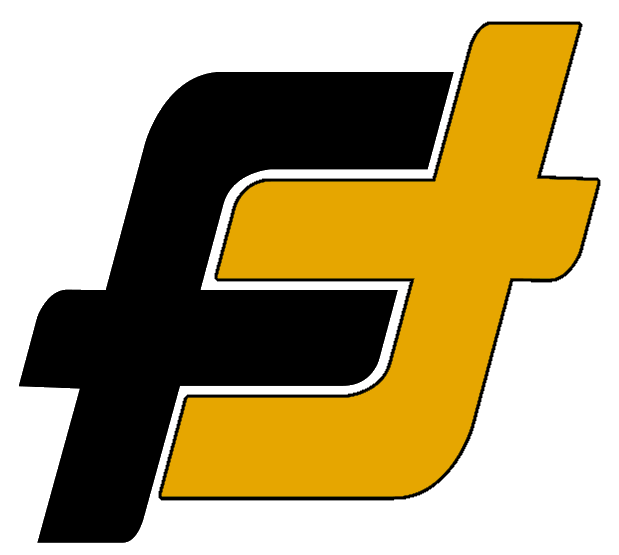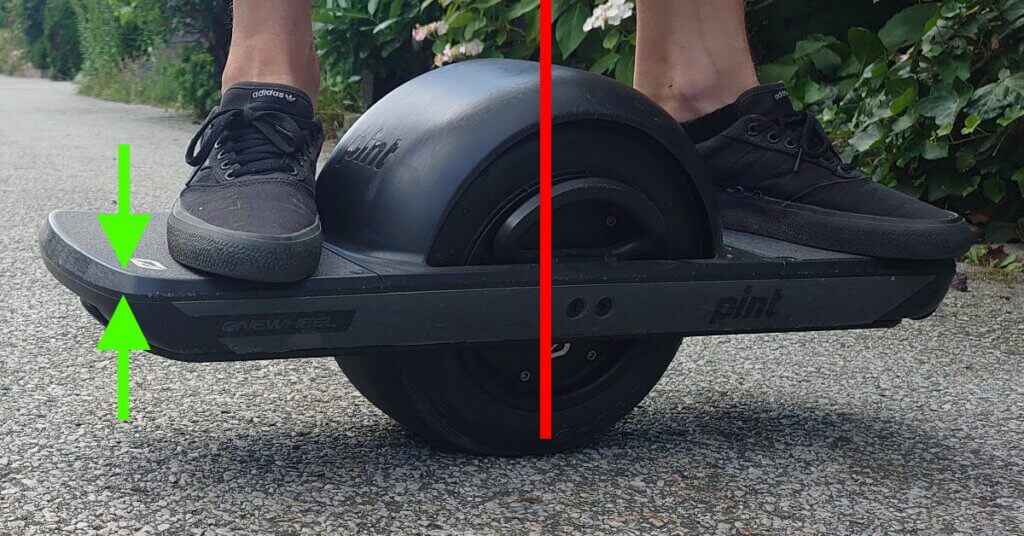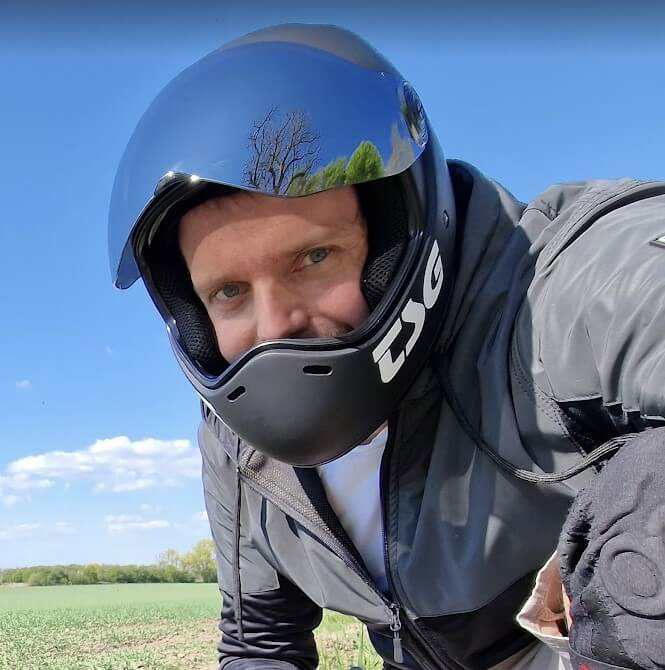If you don’t respect or try and push the limits of the board, then you most likely will encounter a nosedive at some time during your Onewheel career. There are numerous posts and stories about people getting a bit too comfortable with their boards and then hitting the pavement. This post will help you to not only understand why, but also reduce the risk.
A nosedive is when the nose of the motor can’t hold the rider balanced on the board, nosedive down into the ground and the impact is launching the rider forwards.
Let’s break down the mechanics and movement of the board and what’s leading up to a nosedive.
Why does the Onewheel nosedive
When a rider steps on a powered Onewheel and engages the motor with the two sensors the device will start to work. With the help of the battery, gyroscopes and other electronics inside the motor will then balance the board and the rider.
It’s a good idea to try and balance on an unpowered board, this training will not only teach you how much the boards help you, but it will also train your muscle memory to get the correct stance, keeping the center of gravity above the wheel.
Balancing the riders requires power from the motor to counter the weight (force down) and keep the board level. In simple terms, a nosedive occurs when the motor no longer has enough power to keep the board balanced.
When this happens the nose will hit the ground, the forward movement of the board stops, and the forward momentum of the rider will remain, launching the rider forward. The difference between an Onewheel and a skateboard is that when the Onewheel hits the ground the rider is slightly angled downwards, the force will push forward and at the same time down towards the pavement.
The most common reason for a nosedive is the rider pushing the board past its limit. There is a safety feature to help you give you notice and to help you slow down before this happens. It’s the feature called ”Pushback” which will raise the board’s nose. Raising the board’s nose will push the center of gravity backward and put the board in a position to slow down.
The Pint and Pint X have a more pronounced Pushback compared to the XR, which easily be missed and overridden, putting you on the edge of a nosedive. To learn more read the breakdown of pushbacks on the Pint, Pint X, XR, and GT.
What causes Onewheel to Nosedive?
Most of the time the nosedive will happen when the rider accelerates past the pushback of the Onewheel, putting too much stress and passing the limitation of the motor and battery. There is a lot of things that determine the available power of the motor to balance the board and the force the rider puts on it.
The power can easily be explained by the P=V*I (Power = Voltage (of the battery pack) * Current (drawn from the battery)
All battery works on the same principles, Voltage will be at its highest level when the battery is fully charged, and then when it’s getting used the Voltage of the pack will decrease until it’s empty. This results in the available power of the motor will decrease during your ride and being at its lowest at the end.

Most times the Onewheel Nosedive is explained by the limitation of the motor power and the demand from the rider is too hard, things like rider weight, riding uphill, or fast acceleration put heavy demands on the motor.
The Onewheel is working with the concept of moving towards the direction the rider is leaning, applying the force downwards on the footpads, in an attempt to stay beneath the center of gravity.
The board actively controls the speed to maintain the balance of the board. When riding close to the physical limits of the motor the available torque left to control the board becomes less. Any extra weight or force needed to overcome obstacles like hitting a speed bump could make the force downwards to overcome the applied force from the motor, making it slam down into the ground, a nosedive.
I never recommend anyone to ride past pushback, riding at the limits makes it crucial to have the correct riding stance and keep the center of gravity above the wheel at all times. When controlling the board use your legs to push ”Up” and ”Down”. A simple shift in weight pushing the center forward could be the reason for a fall. It’s therefore important to keep aware of your surroundings and anticipate what comes in front of you.
The available torque of the motor.
As stated above the battery level will drastically impact the voltages of the battery and therefore the available power and torque of the motor.
A good thing to keep in mind is that a cold battery will also impact the voltage of the cells, that’s why riding in the cold can drastically reduce the range and also the power of the motor. If you plan to ride outside in the wintertime and want to know more about it check out my post, winter riding tips with the Onewheel.
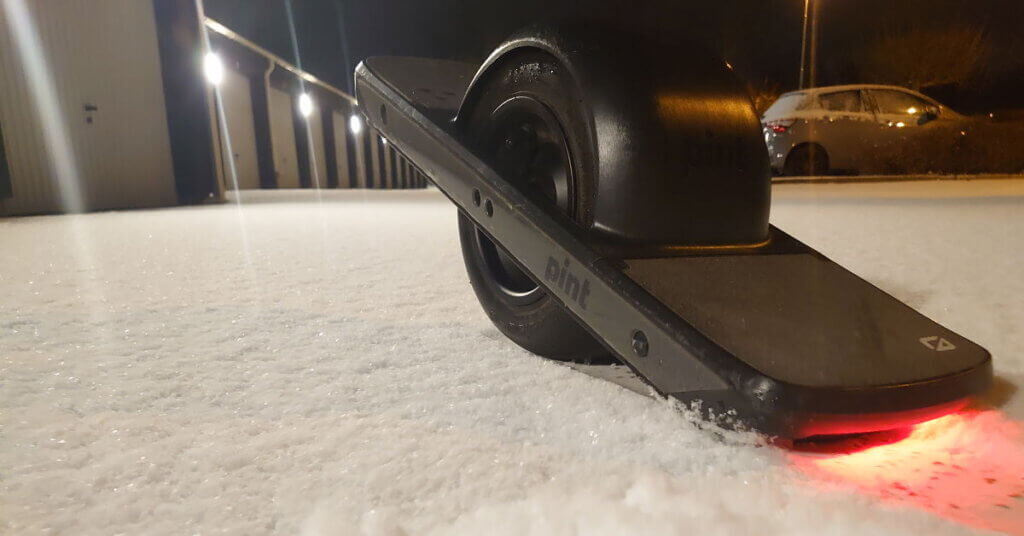
How to not nosedive on Onewheel?
There are some rules you can follow to reduce the risk of nosediving with your board.
1. Have your weight above the wheel
The placement of your feet makes a big difference regarding the force you put on the board. Riding with the feet close to the wheel and your center of gravity above it will drastically reduce the power needed from the board.
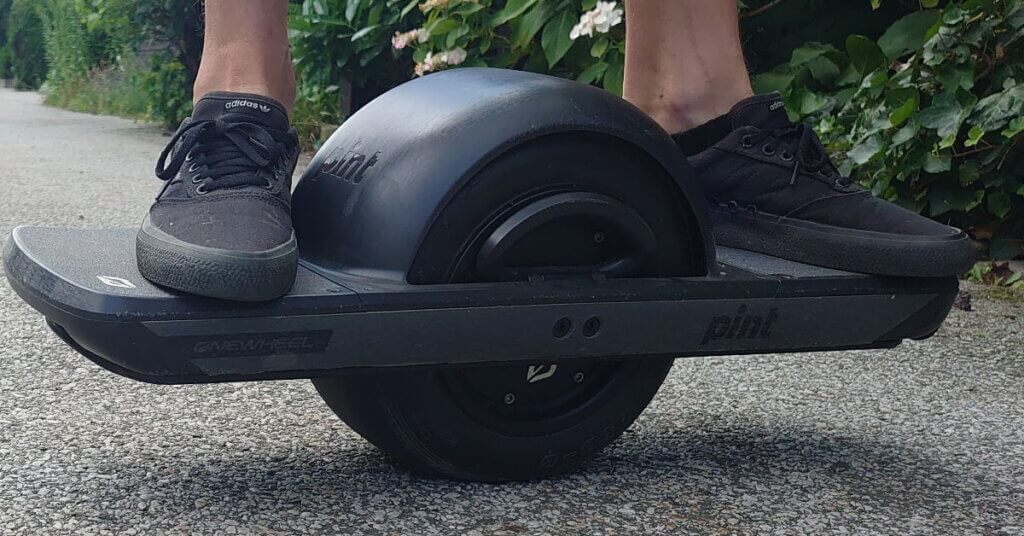
Leaning forward to accelerate will put your center of gravity in front of the wheel, increasing the risk of a nosedive and heavily stressing the motor. Instead control the board with your feet, pushing down on the lead foot and lifting the back to tilt the board to move forward.
Another benefit of having your feet close is a faster response to accelerate and control the board, the lever effect will help you.
2. Don’t ride past the pushback
Most nosedives happen to new inexperienced riders who are pushing the limits. This is usually after a couple of miles and they are feeling that they getting the hang of the board. Take it easy, learn the signs the board is telling you, and if you are having an XR learn how the Pushback feels as it is less pronounced than the Pints.
In simple terms, don’t ride past the maximum speed of the mode you are using. Riding below the top speed will ensure that the is enough power to allow your Onewheel to balance the board.
3. Use the correct riding mode for your board
You should make sure that you are using the best mode for your board. Using the beginner modes will result in pushback at lower speeds, which could be tempting to pass over to gain a bit extra momentum. As riding past pushback is extremely dangerous, there is no more warning system in place, it’s therefore recommended to change the mode of the board.
For XR riders use Mission or Delerium, you can read more about the difference if interested here, Onewheel XR modes.
For Pint riders use Pacific or Skyline, you can read more about the difference if interested here, Onewheel Pint modes.
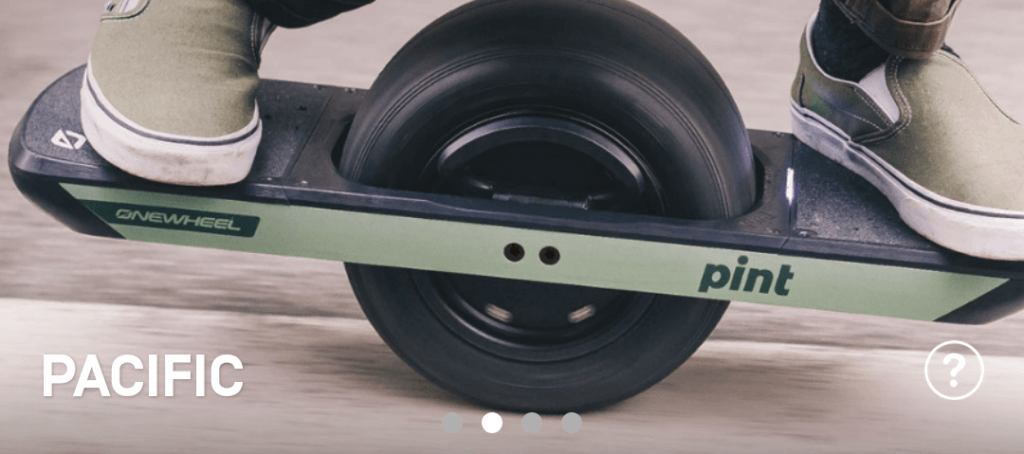
All of these modes have a higher top speed and pushback isn’t as commonly experienced compared to other Onewheel riding presets.
4. Take it easy when the battery is under 30%
As the battery depletes the amount of power available also reduces increasing the risk of a nosedive as the headroom for balancing and autocorrecting any rider mistakes shrinks.
A good rule of thumb is to never run your board below 10% and be careful when riding under 30% in normal conditions. If it’s cold outside, then take it easy after 50%, and don’t plan to have the same range as before.
Onewheel Death 2021
There has not been any reported death in 2021 from users riding the Onewheel. The first lawsuit that was filed against Future Motion is related to the death happening in May 2020 in Houston, Texas. The board is shut off and nosedived while riding in the park.
Luckily there aren’t many reported instances where people have died while riding Onewheels. The list of heavy injuries and broken bones is getting larger. I always recommend anyone to at least wear a helmet and also wristguards.
Onewheel nosedive lawsuit
There are active lawsuits against Future Motions. The Arnold Law Firm has filed a class-action lawsuit that claims the Onewheel device has a design flaw, or other defects, that make riding inherently dangerous. The defect they are referring to is nosediving.
In 2021 two more lawsuits were filed after a similar accident involving Onewheel nosedive into the pavement resulting in brain injuries, “multiple facial fractures, broken ribs and a punctured lung.
“multiple facial fractures, broken ribs, a broken right arm, and a punctured lung caused by his forward ejection from the Onewheel and contact with the pavement,”
according to the lawsuit
These are coming from incidents in August 2020 in San Diego and September 2020. The lawsuit alleges that Future Motion has not complied with consumer protection and warranty laws, thereby putting consumers and users of the product at serious risk. This is because the motor can shut off without warning. Not taking into account the Pushback as a safety feature an Onewheel XR rider easily can ride past it without feeling it.
These lawsuits are most likely the reason for the new improvement, more than 50% power, the Onewheel GT hasn’t pushed the max speed of the device. This gives a lot more room for the Pushback to be effective and make the board more ”safe”.
How dangerous is the Onewheel?
The Onewheel is a dangerous device if it’s not respected and the rider pushes the board past its limits, nosediving. Always wear protective gear and at least a helmet. There are class action lawsuits against Future Motion Inc. because of the handling of the pushback and from riders who have faced serious injuries from falling. Many haven’t read the instructions or used a helmet.
In 2022 the CPSC did send out a statement warning people about the dangers of riding Onewheel and other self-balancing electric skateboards. The recommendation is to stop using the boards because of the risk of the nosedive, or as they state “due to ejection hazard”. To date, there have been at least four deaths and multiple injuries reported.
How do you not nosedive on Onewheel?
In short respect, the board doesn’t pass the speed limits and pushback of the board. Always keep the center of your body above the wheel. Use your legs to put pressure on the front pad instead of leaning forward when controlling the board.

Do fangs help against the Onewheel nosedive?
Fangs will not stop a nosedive from happening, it will give the rider time to react and take control of the board again. When the nose hits the ground the wheels will make the board keep its forward momentum instead of stopping. As the rider and board are still moving forward the rider has some time to slow down or jump off.
Conclusion
In conclusion, understanding and respecting the limits of your Onewheel is crucial to avoiding nosedives and potential injuries. By staying informed about the mechanics of the board, such as the available torque of the motor and the impact of battery levels, riders can make informed decisions to reduce the risk of nosedives. Following essential guidelines, such as maintaining proper weight distribution, avoiding riding past pushback, using the correct riding mode, and being cautious with low battery levels, contributes to a safer Onewheel experience.
It’s important to note the ongoing legal challenges against Future Motion, highlighting concerns about design flaws leading to nosedives and resulting injuries. The increased safety measures in newer models, like the Onewheel GT and GT S-Series, aim to address these issues and enhance rider safety.
Always prioritize safety by wearing protective gear, especially a helmet, and being aware of your surroundings. As the Onewheel can be a potentially hazardous device, riders must exercise caution, respect the board’s limitations, and follow recommended guidelines to minimize the risk of accidents. Stay informed, ride responsibly, and enjoy the Onewheel experience safely.
